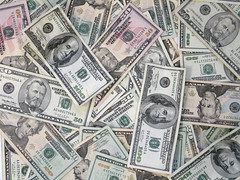Myer's Psychology for AP (Unit 8A: Motivation)
| 8668678536 | motivation | a need or desire that energizes and directs behavior |  | 0 |
| 8668678537 | instinct | a complex behavior that is rigidly patterned throughout a species and is unlearned |  | 1 |
| 8668678538 | drive reduction theory | the idea that a physiological need creates an arousal tension state that motivates an organism to satisfy the need |  | 2 |
| 8668678539 | homeostatis | a tendency to maintain a balanced or constant interval state; the regulation of any aspect of body chemistry, such as blood glucose around a particular level |  | 3 |
| 8668678540 | incentive | a positive or negative environmental stimulus that motivates behaviors |  | 4 |
| 8668678541 | hierarchy of needs | Maslow's pyramid of human needs, beginning at the base with physiological needs that must first be satisfied before higher level safety needs an then psychological needs become active |  | 5 |
| 8668678542 | self-transcendence | when people strive for meaning, purpose and communion that is beyond self |  | 6 |
| 8668678543 | glucose | the form of sugar that circulates in the blood and provides the major source of energy for body tissues. When it is low, we feel hungry |  | 7 |
| 8668678544 | lateral hypothalamus | when food is deprived, blood sugar levels wane causing orexin to be sent out in the system |  | 8 |
| 8668678545 | ventromedial hypothalamus | depresses hunger. stimulate it, the body won't eat. destroy it, food will process faster making you fat |  | 9 |
| 8668678546 | insulin | secreted by pancreas; controls blood glucose |  | 10 |
| 8668678547 | orexin | hunger triggering hormone secreted by hypothalamus |  | 11 |
| 8668678548 | set point | the point at which an individual's "weight thermostat" is supposedly set. When the body falls below this weight, an increase in hunger and a lowered metabolic rate may act to restore lost weight |  | 12 |
| 8668678549 | basal metabolic rate | the body's resting rate of energy expenditure |  | 13 |
| 8668678550 | anorexia | an eating disorder in which a person diets and becomes significantly (15% or more) underweight, yet still feeling fat continues to starve |  | 14 |
| 8668678551 | bulimia | an eating disorder characterized by episodes of overeating, usually of high-calorie foods, followed by vomiting, laxative use, fasting or excessive exercise |  | 15 |
| 8668678552 | binge eating disorder | significant binge eating episodes, followed by distress, disgust, guilt but without compensatory purging, fasting, or excessive exercise that marks bulimia |  | 16 |
| 8668678553 | obese | a body mass index of 30 or more or approx 100 pounds overweight |  | 17 |
| 8668678554 | sexual response cycle | the four states of sexual responding described by Masters and Johnson; excitement, plateau, orgasm, resolution |  | 18 |
| 8668678555 | excitement | genital areas become engorged in blood; vagina expands and secretes lubricant, breasts and nipples enlarge |  | 19 |
| 8668678556 | plateau | breathing, pulse and blood pressure rates increases. Penis becomes fully engorged and some fluid may appear at tip. Vaginal secretions continue |  | 20 |
| 8668678557 | orgasm | female facilitates conception by positioning uterus to receive sperm. Both men and women feel same pleasure after release |  | 21 |
| 8668678558 | resolution | body returns to unaroused state |  | 22 |
| 8668678559 | refractory period | a resting period after orgasm, during which men cannot reach another orgasm. can last from minutes to days |  | 23 |
| 8668678560 | estrogen | sex hormone, secreted in greater amounts by females than males and contributes to female sex characteristics. In nonhuman female mammals, levels peak during ovulation promoting sexual receptivity |  | 24 |
| 8668678561 | testosterone | the most important of male sex hormones. Both males and females have it, but the additional in males stimulates the growth of the male sex organs in the fetus and the development of male sex characteristics during puberty |  | 25 |
| 8668678562 | sexual orientation | an enduring sexual attraction toward members of either one's own sex or the other sex |  | 26 |
| 8668678563 | arousal theory | theory of motivation; each individual has an optimal level of arousal (alertness, paying attention) that varies from one situation to the next; maintained by desire at that moment; may affect your performance (Yerkes-Dodson Law); Advantages-sensation or thrillseekers |  | 27 |
| 8668678564 | Extrinsic Motivation | external motivation; completion of activity because of the consequence: reward or to avoid punishment; ex. Job, chores, school assignment, etc. |  | 28 |
| 8668678565 | Intrinsic Motivation | internal motivation; completing the activity because it please you; ex. Singing, reading, crosswords, etc. |  | 29 |
| 8668678566 | James-Lange theory | We feel an emotion because of our physical reaction | 30 | |
| 8668678567 | Cannon-Bard theory | Our physical reaction and our emotion happen simultaneously | 31 | |
| 8668678568 | Two-factor theory | Our emotional experience is the result of our physical reaction and our cognitive label of it | 32 | |
| 8668678569 | Catharsis hypothesis | An emotional release on something harmless, like tearing up a picture or punching a pillow | 33 | |
| 8668678570 | Amygdala | Fear, anger, and aggression are associated with this part of the brain | 34 |

